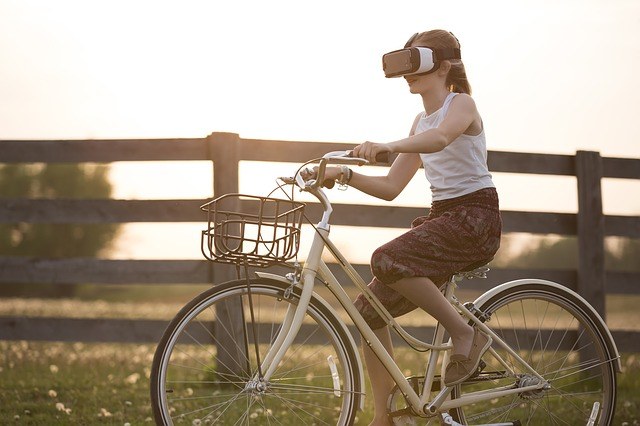6 UX Design Trends That Will Impact Your Company's UX Strategy
Every day, new UX design trends are emerging to render the older systems and concepts obsolete. You should ensure that your UX strategy is up to date.
As the online community evolves, the demand for exceptional UX design is increasing steadily. With tech developments racing at breakneck speeds, exciting new approaches and design trends in UX are emerging to render the older UX systems and concepts obsolete. Many new technologies have surfaced recently and are taking the developing world by storm. Naturally, you must keep up with these developments to ensure that your UX strategy is not the one lagging behind. To keep you up to date with the latest UX trends, we have compiled some of the best UX design trends that are sure to have a dominant influence on your evolving UX strategy.
If you want to know more about the importance of UX design for mobile apps, we recommend you to check out this article on stats and facts you can’t afford to ignore.
[cta_blog_inner]
1. Design Systems
Although this concept is not new, it certainly has a renewed zeal about it. As process-oriented service providers are making an impact on the industry, we have seen a rapid escalation in the demand for these design systems. So, what is a design system?

A Design System is a compilation of distinctive styles and images that follow a particular theme. These are created as a file and then updated for public use by different style theme developers. People can download and reuse it just like any other reusable code that developers use. These designs and layouts help amateur designers to configure different systems and improve their understanding of the editing process. They can make the necessary changes and change the entire appearance of the design system to suit their own business. This blank canvas, with easy directions, is the primary reason behind the vast appeal of design systems.
2. Verification Codes
As UX designs have been changing, the security standards have upgraded simultaneously. Where a simple password was enough once upon a time, new UX design trends involve a verification code sent by the site to the user’s email or cell which the user must enter to verify his/her account and consequently gain access. This process is an added layer of security as well as the practicality, as people tend to set weak, insecure passwords. Authentication is now conveniently confirmed using One-Time-Passwords, which expire within minutes, and ensure that only the authorised user is trying to gain access. This feature is an excellent step towards feasible security and eliminates major privacy concerns, making it a huge milestone for your UX strategy.

3. Personalisation
Nowadays, every major and developing company is focusing on personalising the user experience. This UX design trend is the holy grail of UX strategy. Although this concept is not new, it is so vast that even after years of exploitation there is so much more that developers can achieve with this on-going trend. Having a thorough understanding of your users and incorporating carefully researched keywords will allow you to provide your users with a variety of personalised effects. This personalisation can range from video streaming to online shopping.

The mode of interaction is also updating. The newest strategies are focusing on customised interactions with personalised conversations and much more. Other developers are focusing on making the conversations more age appropriate catering to a variety of audience types. The simple personalisation of the colours and fonts can have a significant impact on the features and is currently being explored and utilised.
To read more on the importance and benefits of personalising your UX, check out this blog on the Personalization trend in UX.
4. Augmented Reality
Initially, most people thought that augmented reality would remain localised to games. Augmented reality adds to the environment you would normally see, as compared to virtual reality, which replaces that reality. However, the technology has thrived since then and has spread elsewhere. Take Snapchat, for instance, or a regular smart phone’s camera with its many filters. These apps are changing, or “augmenting”, the reality in real time. Statistics have predicted that augmented reality and virtual reality will grow rapidly in the upcoming years.

5. Artificial Intelligence Interfaces
With Apple’s Siri and Hanson Robotics’ Sophia revolutionising technology and leading the digital assistant industry, artificial intelligence is slowly seeping deep into every aspect of our lives. The world of artificial intelligence is on the rise, and it is not going to be long before further advancements breakthrough.
If you would like to read more on artificial intelligence, you should check out this article which talks about a few factors that are accelerating the rise of artificial intelligence.
Users are now much more open to using artificial intelligence, welcoming digital assistants to help them with daily tasks. Amazon’s Alexa has also garnered a huge following. Users can now optimise specific tasks, without having to shift their visual attention, so they can perform their regular activities, which enhances their experience. This intuitive interaction is the main appeal behind one of the fastest growing UX design trends.

The minds behind these digital assistants are now working on optimising artificial intelligence and fixing bugs to enhance the user experience even further. Another important feature of these assistants is their ability to process what we speak. Many users favour these gadgets simply due to the fact that these assistants can understand and translate their voice.
However, these voice over interfaces need to be coupled with their respective graphics interfaces as well. There are several reasons as to why this is necessary. The first problem is the diversity of accents and dialects in the English language. The interfaces are still not advanced enough to fully comprehend the myriad nuances of slang and tone. They still need to improve further to be able to understand different people. Moreover, the interface cannot distinguish between two different voices. So, in a crowd for instance, it will be unable to understand your command. This is when a graphic input becomes necessary to give a command.
6. Android still commands the visuals
Apple has revolutionised the smartphone as we know it, as has carved a niche for itself. However, Android is still stealing the visual game, and there is still a bias towards android’s user interface when it comes to apps and games. This fact, in turn, has led to rising demand for Android phones and is the initial boost behind the excessive sales. Android hasn’t been idling either. Focusing on security issues as well as a better interface, they have improved their user experience drastically. Their improved strategies are influencing UX design all over the world and are much liked by users everywhere.

Conclusion
As we enter the second half of 2018, we can observe notable trends leaning towards improving the speed of apps, enhancing the simplicity and personalisation of UX designs, and increasing online security. Many of the trends described in this blog have been evaluated from recent design innovations, and are likely to influence the new UX strategy of multiple industries. However, the primary UX trend remains constant; simpler and faster interface is the key focus of designers as well as users.
If you want help with your UX/UI, you should definitely contact our UX/UI experts to get the best design for your apps, that too at an affordable price!





